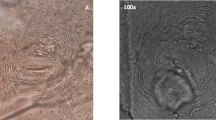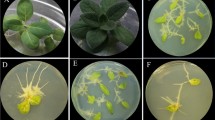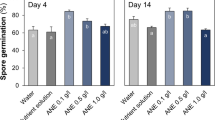Abstract
OBSERVATION through the glass panels of an underground root observation laboratory1 and subsequent sampling for detailed study have shown a high proportion of the white growing tips of extending apple tree roots to be attacked by the ectoparasitic nematode Trichodorus viruliferus Hooper. Colonies of 10 to more than 100 individuals congregated 1–3 mm behind the apical meristem of suitable roots (about 1 mm in diameter), rasping the epidermis and hypodermis with their stylets and causing a superficial but characteristic browning. Severely damaged portions of the root often swelled and occasionally their surface split. Root extension usually ceased after 5–15 days of feeding, although the meristem itself was not the focus of attack. Once growth had ceased most of the nematodes dispersed within 1 or 2 days. The damage to the root tip was essentially the same as that associated with the ‘stubby root’ symptom in many herbaceous hosts, which has been ascribed to other species of this genus in the United States2. In extending apple roots, however, it was not accompanied by the characteristic branching and stopping of secondary and tertiary roots.
Similar content being viewed by others
Article PDF
References
Rogers, W. S., and Head, G. C., Rep. E. Malling Res. Sta. 1962, 55 (1963).
Rohde, R. A., and Jenkins, W. R., Phytopathology, 47, 295 (1957).
Author information
Authors and Affiliations
Rights and permissions
About this article
Cite this article
PITCHER, R., FLEGG, J. Observation of Root Feeding by the Nematode Trichodorus viruliferus Hooper. Nature 207, 317 (1965). https://doi.org/10.1038/207317a0
Issue date:
DOI: https://doi.org/10.1038/207317a0



